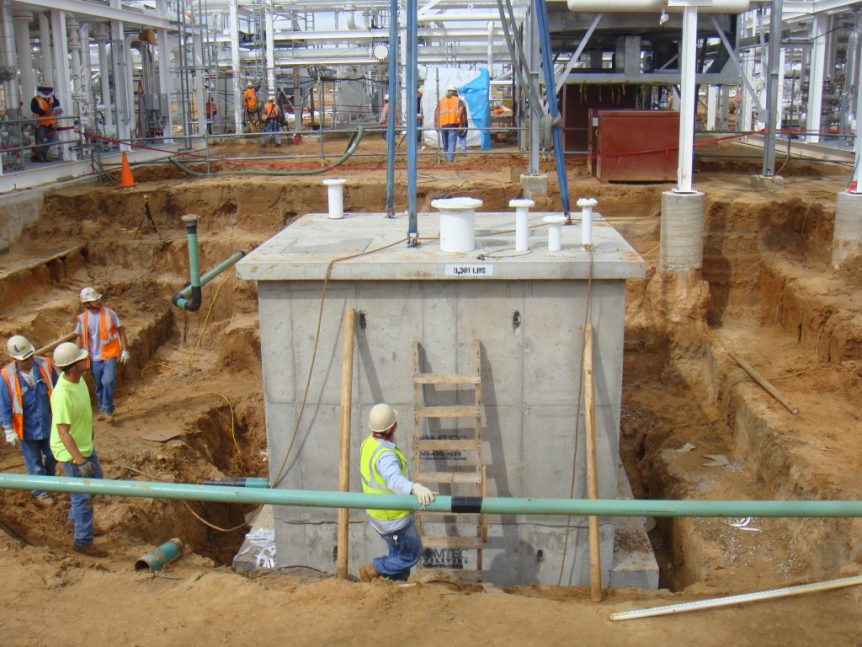
The Ajax Gas Plant in Wheeler, Texas is the first example in this industrial stormwater blog series. This plant owned by Enbridge Energy Partners is a natural gas processing and refining facility that is currently under construction. The Ajax plant is expected to be operational on schedule in early 2013, and one of the final systems added was the Romtec Utilities supplied package stormwater pump station.
Romtec Utilities worked with Enbridge Energy Partners and Audubon Engineering to engineer a package system that would safely manage the stormwater at the plant. From the standpoint of design, this pump station illustrates the value placed on environmental responsibility by these companies. The engineering specifications proposed a rectangular concrete wet well, which can have implications on pump station construction.
Rectangular wet wells are typically cast in 4-foot-tall segments. During construction, the segments are stacked and joined with a rubber gasket and joint sealant or tape. This construction method is customary and generally produces no problems. For the Ajax Gas Plant, however, Enbridge and Audubon wanted to eliminate any possible points of weakness from the station. Romtec Utilities worked with Colorado Precast to design and cast a monolithic 11-foot-tall wet well.
Creating a large concrete casting for the wet well was not easy, but Enbridge and Audubon were committed to installing a packaged system that went above and beyond the best available technology (BAT) required. Choices like this one demonstrate Enbridge’s continuing efforts for lower environmental impacts.
The station was engineered with vertical sump pumps for industrial water applications. These pumps are intended to handle the suspended particles, like grit and hydrocarbons, that wash into the system during a stormwater event. Additionally, the bottom slab of the wet well includes a weir wall where the inlet line enters the well. The weir wall provides a semi-contained area for heavier particles to settle. The water then overflows the weir wall with fewer suspended particles.
All of the stormwater gets pumped into what is called a “slop” holding tank. The tank is then emptied into trucks which transport the water to an offsite treatment facility.
As we will continue to see with industrial applications, this package lift station did not include a Romtec Utilities control panel. Many industrial customers employ staff capable of designing, installing, and maintaining electrical systems. For Enbridge and Audubon, Romtec Utilities’ packaged approach allowed them to purchase the engineering and components they required while self-managing more familiar aspects, such as controls.
Next week, we will make our way up to the Pacific Northwest to look at a British Petroleum plant that installed a lift station for the future.

